


Formed in 1928 the MG Car Company made it's premier showing of two new MG Midgets in the year 1928 at the London Motor Show. Following that appearance the production of MGs tripled with the MG M type Midget accounting for more than 50% of the company's production. In 1930 the company relocated to its factory and works in Abingdon. And it was during this time the the MG slogan "Safety Fast" was born.



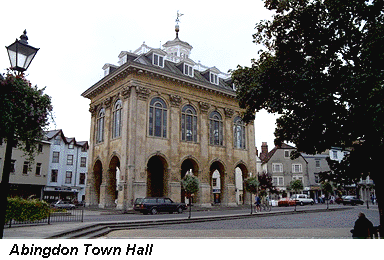

The marque was first used in 1924 in a bull nosed sports car, now affectionately name Old Number One. This formed the basis of the MG Car Company, with Lord Nuffield at its head. In 1922 management of the MG Car Company was taken over by Cecil Kimber. Kimber was an avid motor sports enthusiast and is also credited for introducing the classic radiator style recognizable on so many cars such as the T-Series MG's.

The Nuffield Organization not only owned the MG Car Company but a number of other marques as well, often competing with MG over the years. These included Morris and Riley. At times it seemed that MG could never get the resources they needed to become world leaders in the marketplace. Not only were they competing with the likes of Triumph and Austin, but the real battle seemed to go on internally in the Nuffield Organization. This continued right through the merger of Nuffield and Austin in 1952 which formed the British Motor Company (BMC). MG's were produced in Abingdon, England from the early 1930's until production ceased in 1980. Other cars from the Nuffield organization were also produced at Abingdon during the years and vied for precious resources.
In 1922, 33-year-old Cecil Kimber joined Morris Garages as sales manager, to be appointed as general manager in the following year. Kimber had a great interest in body styling and coach building and was also an enthusiastic sports car driver. At the time, the Bullnosed Morris Cowleys and Oxfords were the best-selling cars in Britain, but were undeniably staid. So, it became natural for Kimber to turn his skills to fitting Morris chassis with a special bodywork of a more sporting nature.
In 1923, the first special-bodied Morris cars were marketed by Morris Garages, and in March 1924 the first MG car - a four-door saloon body on a Morris Oxford chassis - was advertised. It was followed immediately by the first examples of the MG four-seater Special Sports, also on the Oxford chassis

For 1925 a range of MG Super Sports models were offered, with two or four seater bodywork, or in 'salonette' form. In the same year the first entirely special purpose built MG sports, 'Old No. 1' was made for Cecil Kimber's own use. Kimber entered the car in the 1925 Land's End Trial and won a gold medal.

The period 1930 to 1935 saw the classic MG years, with a great variety of four and six cylinder models being manufactured. Most were sports cars, although a number of pure racing models were also developed and won countless successes on race tracks and road circuits in Britain and abroad. The name MG became synonymous with sports cars and it was in this period that the foundations were made for the lasting fame of the marquee.
Until 1935, the MG company had been the sole property of Lord Nuffield. However, in that year he sold the company together with Wolseley and his other interests to Morris Motors Ltd as part of a general rationalisation of the Morris companies, forming the Nuffield Organisation. It was simultaneously announced that MG would withdraw from racing. However, although there were no more MG racing cars, the company entered a new field of achievement with a series of record cars. The first was the EW120, the 'Magic Midget' which George Eyston drove at over 100 mph. This was followed by the EX135, the 'Magic Magnette' which was rebuilt with streamlined bodywork and in the course of its 15 year career, broke numerous records in different capacity classes, using five different engines.
In 1952 Nuffield and Austin merged to form British Motor Corporation (BMC). This gave MG a family rival in the form of the Austin Healey sports car. In 1957 Austin-Healey production was transferred to Abingdon.
The post 1960 period saw only six different MG models. The two saloon cars, the Magnette Mark III/IV and the 1100/1300, were relatively tame badge-engineered versions of the mainstream BMC products and were both made in the Cowley factory rather than in Abingdon. The 1100/1300 became the most popular saloon model, with 175,000 made between 1962 and 1971.
During the 1980’s, the MG versions of the Metro, Maestro and the Montego were produced. These models were very successful, but were progressively phased out as derivative offerings were rationalised.
The MG T-Series
In 1936 the MG Car Company made a dramatic change in the design of their sports cars. In this year they introduced the MGTA Midget. The MGTA originated the familiar T-Series design element and to the casual observer, it is hard to distinquish from the MGTC. The MGTA sported the famous radiator design, the swept wings, running boards, folding windscreen, and large accessible bonnet. It was a two seater sports car with a foldable hood and side curtains. Just over 3,000 MGTA's were produced in three years of production. The MGTA suffered from a poor performing engine and in 1939 the MGTB was introduced with the now famous XPAG engine. Only a few were produced as in a few months World War II broke out.
During World War II production of MG's ceased as the MG Car Company was put into service for the war effort making tanks and airplane parts, and other military items. When the war ended the the MG Car Company was anxious to get back to making sports cars. They revisited the MGTB and made a few subtle changes. These were in the form of a wider body and shackles replacing sliding trunnions for the spring mounts. The Nuffield Organization also made another drastic change. They started taking an active interest in selling their sports cars in North America. It appears that during the War a number of American GI's had an opportunity to experience the T-Series MG's. When the War ended a number of these cars were imported and then formally sold into North America, especially the United States. The MGTC was produced from 1945 to 1949 with a total production of about 10,000 cars.
Due to the fact that the United States had much more cash available to spend on entertainment and sports than did war torn Britain, the Nuffield Organization made a drastic change in their marketing, focusing on North America. In 1949 the MGTC was fitted with many elements to make it more North American such as front and rear bumpers, twin horns, and dual tail lamps. Even by making these changes only a fraction of the MGTC's were imported into North America. There were still too many issues with a car of this type for different North America conditions. Amongst those were driving on the right hand side of the road rather than the left, more high speed maneuvers such as freeways, a softer ride, and some additional creature comforts. What was needed was a total redesign of the MGTC if the MG Car Company was to capture a significant portion of the North American market. What was missing was a total commitment from the Nuffield Organization to do so.
The Legacy of the MGTD
In 1949 a small group of MG leaders, headed by John Thornley, got together to try to create a car that was acceptable to the North American marketplace while at the same time would limit the investment of the Nuffield Organization. Clearly it would be impossible to completely create a new car, not only from a financial point but from a timing standpoint as well. What was needed was a little of the old, sprinkled with a little of the new. Another key factor was to borrow or incorporate features found in other Nuffield cars of the time that were more up to date than the MGTC.
First it was decided to start with the MGTC. It was felt that the MGTC still provided a favorable brand image to the North American marketplace. Many elements of the MGTC were still believed to be important such as:
The styling Safety Fast engineering The powertrain The familiarity of design
What was missing was:
More futuristic styling Better turning and handling A smoother ride Left hand drive More creature comforts such as an optional heater and radio
Quickly a team of MG personnel took inventory of the components of the Nuffield Organization that they had to work with. They discarded the TC's frame because it was to light and not rigid enough. They found what they wanted in the Y types. A small modification to the frame was to have it sweep over the rear axle rather than under. This gave them more travel in the rear springs so they could increase the damping. In addition they adopted rack and pinion steering and front coil springs and wishbones. This and the change in rear end suspension allowed for a smoother ride and better handling than the MGTC. One of the major changes was to reduce the wheel size from 19 inches to 15 inches and increase the tire width to 5.50. All of these changes made the MGTD a superior riding car over the MGTC
Because of the use of the larger frame the body became 5 inches wider. Although the body increased by 5 inches, only one inch actually found it's way into the cockpit so there is an indiscernible difference in the seating width. The biggest change that people notice about the MGTD from the MGTC is the lack of wire wheels. As part of the Nuffield cost cutting challenge the more expensive wire wheels of former T-Series cars were replaced by solid steel wheels. For the entire production run of the MGTD the factory took heat for this decision. They constantly tried to create implausible technical reasons why wire wheels would not work but their reasons were never accepted by the marketplace. In fact wire wheels were one of the most popular aftermarket accessories at the time. Nuffield itself had to offer an upgrade kit to wire wheels during 1953 because the essentially identical 1954 MGTF chassis sported wire wheels as an option.
Other changes between the MGTC and the MGTD were more stylized wings, partially due to the smaller wheels. A dual production capable LHD or RHD model, better brakes, adjustable steering column, and an interchangeable dashboard for left or right hand driving were also incorporated. An optional radio and heater, as well as many accessories designed to improve the performance of the car were made available.
The MGTD Models
The MGTD was produced from 1949 to August of 1953. During that period the MGTD saw many subtle changes, but nothing drastic. See the pages on production for details on the changes of the MGTD over the years. The MGTD was offered in three basic models although no more than two were ever available at one time.
TD
The original MGTD was first produced in late 1949 and had it's formal introduction in January of 1950. There were a total of four model years; 1950, 1951, 1952, and 1953. The first model set the stage for what the MGTD was. Because of the short amount of time from the inception of the MGTD to the delivery of the first cars, not everything was quite as the MG Car Company would have liked it. In fact they were still making MGTC's on the production line when the first MGTD's were produced. Other models were also being made on the same assembly line at the same time. This says something of the flexibility of the Abingdon work crews and factory.
Most changes to these early MGTD's were unnoticeable from the untrained eye. One exception to this was the change from solid wheels to slotted wheels. Still steal and not wire, but a change nothing else. Most of this seems to be precipitated from the fact that the brakes were fading due to poor cooling. Another change was to stiffen the body by adding an internal under firewall tubular frame. It helped but the MGTD body bucket still seems to flex quite a bit when pressed into corners.
TD II
The TD II (not to be confused with the MGTD Mark II) was essentially more refinements done to the car by the factory. Minor changes to the engine generated the need to create a new engine type, the XPAG/TD2. This in turn caused them to designate these cars as TD2's, although even their marketing materials never really mentioned this change. There really weren't any model years for the MGTD, as changes were introduced subtly. The biggest changes occurred during the 1953 model year as sales of the MGTD started to fall in favor of cars like the TR2 and Healey 100. In 1953 MG introduced round taillamps (not sure what the feature of these were), turn signals, a three bow top or hood, and moved the windscreen wiper motor central for safety reasons.
TD/C or TD Mark II
In the middle of 1950 model year the MG Car Company began factory producing some special MGTD's known as the Mark II. These cars were essentially regular MGTD's that had been given some extra factory accessories and tuning. There was not an exact list of these features, and in fact over the production of the MGTD the features of the Mark II would change. It was also possible at the time to buy everything for a regular MGTD that the Mark II model offered. Some of the changes were to increase the base horsepower of the engine from 54 bhp to 57 bhp, larger tires, additional Andrex friction shocks front and back, higher rear end ratios, dual fuel pumps, and larger carburetors. Most of the features of the Mark II were a part of the staged tuning that was described in various publications and offered as a factory tuning manual.
From all these changes it appeared that little changed in how the car actually handled. Many folks opted to buy a regular MGTD and go through a series of Stage Tunings to increase the performance of the MGTD well above what the Mark II achieved.
The Follow-on of the MGTD
Production of the MGTD peaked in 1952 and 1953 found sales of the car starting to fall. Again the MG Car Company found itself in need of a whole new automobile but without the support of the parent BMC Organization.
The MG EX175
John Thornley's team at Abingdon had crafted a complete replacement for the MGTD code named the EX175. Because of the organizational changes that occurred when BMC took control of the MG Car Company, the EX175 was in direct competition to it's new step cousin, the Austin-Healey 100. Since the Healey was already committed, BMC did not want a new fangled MG to dilute the possible sales so MG was left high and dry without a replacement for the MGTD.
MGTF, MGTF 1500 and MGA
An effort to recapture the marketplace by doing what they had successfully done before was attempted in 1953. Borrowing on the success of the MGTD and Mark II as well as a little streamlining of the body, the MG Car Company created the MGTF. The TF was immediately shunned by the public. It was clear that all MG had done was to pound a bit on the body and fenders, add some more comfortable bucket seats, and throw on some wire wheels. In fact the car was worse in many ways because you could not easily get to the engine to modify it or maintain it like you could on prior T types. The TF 1200 still performed poorly compared to other sports cars of the period. In 1955 MG came out with a more powerful 1500 cc engine that replaced the tiring 1250 cc engine of past T Series cars.
Finish information on the MGTF can be found at this page. For more information on the MGTF please see these pages.
This larger capacity engine did improve the performance greatly and made the MGTF 1500 a much better performing car on the freeways and tollways of North America. Still the MGTF never captured the success of the MGTD and was replaced by the MGA within two short years.
The MGA represented a significant change from the T-Series cars and actually looked like it belonged to the era it was produced in. It supported much of the same chassis and drive train features as the MGTF but had an all new streamlined body. Interestingly the car had a remarkable resemblance to the EX175. Over time MG would make many changes to the MGA in both styling, performance and handling. At one point they even offered a hard top, called the MGA Coupe as well as a twin cam engine.
The two-seat open body was unmistakably a development of the earlier Philips racer design, being of the full width type, the wings blending into the bodywork and each other to produce a beautiful and aerodynamic design. Other than a shortened, stylised and widened version of the now familiar MG grille, there was very little about the MGA which bore the slightest resemblance to any of it's predecessors. From the scuttle, the body fell in one constant curve to the radiator grille, blending into the full swept front wings on each side. The line of the front wings was taken back past the cockpit with its cutaway doors, to where it merged into the rear wings. These tapered almost to a point at the rear and were blended into the rear portion of the bodywork that curved down from the back edge of the cockpit.
A pancake-style bonnet provided access to the engine, and a separate boot for luggage was able to provide a reasonable amount of space despite the fact that the spare wheel was mounted to the boot floor. The car had bolt on steel disc wheels as standard, but centre-locking wire wheels were available as an optional extra, along with a removable hard-top with rigid sliding windows to replace the soft-top's sidescreens.
By 1959, Abingdon was hard at work producing nothing but sports cars, since the ZB Magnette had been dropped from the range, and the MGA was selling well and they were also busy producing the six cylinder Austin Healey. Furthermore they were about to go into production of a new small sports car called the Austin Healey Sprite, the future looked promising! However, all was not well for the MGA Twin Cam. Despite its very good showing in a wide range and large number of competition events, it was a car that needed sympathetic treatment from the driver. Unfortunately the increasing "civilization" of sports cars had led to a new breed of sports car driver who was not quite as in tune with the car as his contemporaries had been with the earlier sports cars. The MGA Twin Cam was a highly strung thoroughbred and was easily damaged through misuse. As a result of this it got a bad reputation, and in early 1960 it was dropped from the range.
A year later, in 1961, the MGA 1600 MkII appeared. This had a 1622cc version of the standard B-series engine together with other minor changes, which included new rear lights and a redesigned grille with inset vertical slats. The engine now developed 93bhp, which was an increase of some 25bhp over the original MGA's. In this form the car was capable of travelling well in excess of 100mph, offering similar performance to the Twin Cam but without the temperamental nature of that car.
A few remaining Twin Cam chassis were also given the 1622cc B-series engine, but retained the four-wheel disc brakes and centre-lock steel disc wheels. In this guise they were known as MGA 1600 MkII De Luxe, which ridiculed MG's reputation for short names for it's cars!
By now, despite the fact that it was a very good sports car, the MGA was getting a bit long in the tooth and was not offering the level of interior comfort which was being demanded and could be found in its direct competitors. Sales were now begining to tail-off, inspite of the car continuing to prove itself well on the race track. In 1962, therefore, after around 100,000 cars had been produced, the MGA was dropped from the MG range. It's replacement was already waiting in the wings, and would prove in it's many forms to be the longest-running and best-selling MG of them all - the MGB.
The engine and transmission came directly from the MGA, but the b-series engine had been increased in capacity to 1789cc, which resulted in 94bhp, and a diaphragm clutch was used between the engine and transmission. As standard, the car was supplied with bolt-on steel disc wheels, similar to those of the MGA but of a slightly smaller diameter. The MGB was extremely well received by the press who were fulsome in their praise of the new car, which was capable of exceeding 100mph without any fuss. Performance handling and economy were all of a high standard for the time, which resulted in a thoroughly reliable sports car that was a joy to drive. It found a ready market, particularly in the USA.


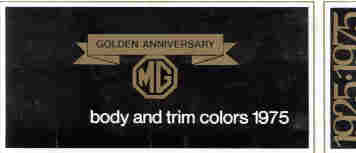
A year later in 1963, among the options offered for the MGB were an overdrive for the transmission, centre-lock wire wheels, and a folding soft-top that could be stowed behind the seats. And in 1964 a much stronger bottom-end for the engine, derived from the BMC 1800, was fitted.
In the tradition of the earlier MG sports cars, the MGA had been built with a separate chassis to provide support and strength to the car, and to carry all the mechanical components and the body. By the end of the 1950's however, methods of car construction had moved on , and the days of the separate chassis were almost over. Unitary construction was now the name of the game, whereby a cleverly designed bodyshell constructed from a number of metal panels with a reinforced floorpan, provided mountings for all the mechanical components and absorbed all the loads from the suspension etc. The advantage of this type of construction was that it produced a much lighter car, which has obvious performance benefits for a sports car.
Hence, the MGB was to be built of unitary construction. At the front, the inner wing panels, front panel, and engine compartment bulkhead formed one box; the scuttle, bulkhead, and front floor formed another; while the rear inner wings, boot floor, and rear panels formed another. Box section strengthening pieces were added to the floor to stiffen it and provide mountings for the rear suspension, while additional box sections ran along the bottoms of the front inner wings for the engine and suspension mountings.
The front suspension and steering were much like the MGA, although there were minor differences. At the rear were the familiar semi-elliptic springs controlled by lever-arm dampers. The engine and transmission were also MGA sourced, again with some minor changes.
By the late 1960's, the MGB was beginning to be affected by exhaust emission and safety legislation which required frequent modifications to the cars specification. This was particularly the case with those models destined for export, especially for the USA.
Detail modifications continued until 1970 when the most obvious change was to a matt black recessed grille which, unlike the original grille, had no obvious link to the MG grille of old. Other changes included modified rear lights, Rostyle sculpted steel wheels, and revised interior .
There was also a change to SU HIF carburettors in an effort to improve the exhaust emissions problem.
It is often assumed that it was the private venture of Ken Costello in 1971 which precipitated Abingdon into producing the V8-engined MGB, but this is not true. Costello was an enthusiast who ran a tuning business. The first Abingdon experiments with a V8 engine were taking place well before Costello work was being publicized. In fact, the first Abingdon prototype was registered in 1970. One of the reasons Costello stole a march on the manufacturers was that he had no corporate "red tape" to deal with! While MG were was dealing with the problems of type approval and other modifications, Costello was able to shoehorn the engine into place on a custom-built basis, and had produced a few dozen cars between 1971 and 1973. The Abingdon version was announced in 1973, just two months after Costello's cars had come to the public eye.
The car made use of the 3532cc aluminium Rover V8 engine as was being used in the Range Rover. Developed from an early Buick design, the engine was very light in weight - it actually weighed less than the original B-series MGB engine - and in standard tune offered a healthy 137bhp. It fitted snugly into the MGB's engine bay after only slight modification to the bulkhead, and with the development of a low-rise exhaust manifold allowed MG to use the standard MGB bonnet. Furthermore, the engine could, unlike in the MGC, be fitted without dispensing with the front suspension crossmember, so the coil-spring type suspension could be retained. The standard suspension was employed at the rear too, but the ride height was increased by an inch all round. The engine was mated to the MGC gearbox and rear-end transmission, although the ratios were slightly modified.
The combination of the Rover V8 engine and the MGB produced an excellent touring car with high performance, good economy, and good handling. The press received it well and it found a ready market, although it was never exported to the USA for some unknown reason.
In 1976, the car was killed off, supposedly because of the limited supply of engines, which were being built under licence and were required for Rover's new SD1 saloon. Another contributing factor to the cars demise was the fuel crisis which was experienced in 1975, which led people to buy smaller engined, more economical cars. Given the obvious success of the car, it seems strange that it was ended, and possibly there was more to it than just these factors. The MGB GT V8 was, after all, in much greater demand than Triumph's V8-engined Stag, which continued in production...
The MGB continued in this form, with further detail changes to the specification, until production finally came to an end in 1980. By then the car was definitely past its best, but there was no replacement to be had. Development work had been stopped at Abingdon, for British Leyland preferred to concentrate on their Triumph products. It was claimed that BL were losing money on every MGB built, but this was hard to believe since there were few major changes to the cars specification over the years, so development costs must have been recouped long before the end.
However, the end it was, not just for the MGB, but for MG and Abingdon as a separate entity within the British Leyland group. The plant was closed, but the stir this caused among MG enthusiasts around the world caused the parent company to realise that the MG name was a valuable commodity. While it was thought that the MG name as a sports car manufacturer was dead, the name lived on being carried by a number of BLs sporting saloons, and is now being re-born by the now Rover Group in the guise of new sports cars - the MG RV8 and the new MGF.
Both roadster and GT versions of the MGC were available, but the car was not received well by the press, despite the fact that it had a top speed approaching 120mph. They complained that its handling and acceleration were poor, and that it looked too much like the MGB. It was, however, a very good, long-legged touring car.
The MGC should have been one of the best-selling sports cars of all time, because in concept it offered a much improved performance over the MGB on which it was based, at a similarly low price. But sadly the MGC was to be very short lived, for in 1969 it was dropped from the MG range. No doubt that its poor reception by the press had affected sales, and by then MG had come within the British Leyland group, where Triumph products were looked upon with favour - and the MGC could have made life difficult for the Triumph TR6.
To accommodate the engine, some changes had to be made to the bodyshell and mechanics of the MGB. From the outside, the most obvious changes were the bulge in the bonnet and the 15 inch road wheels. The bonnet bulge was essential to clear the top of the long tall engine, and the larger radiator which it required. It was also found necessary that the front crossmember, upon which the suspension and engine were mounted in the MGB, had to be removed to clear the bottom of the engine, in particular the oil sump. This meant revising the front suspension from the original coil spring set-up of the MGB to one which used torsion bars as the springing medium. These ran back longitudinally, to a mounting point below the floor, to transfer the suspension stresses back to the centre of the reinforced bodyshell.
The rear suspension was essentially the same as the MGB, but a much stronger rear axle had to be fitted to accommodate the increase in power, and also the spring rates had to be increased both front and rear to accommodate the extra power and weight. There was also a new stronger, all synchromesh transmission for the same reason, and as with the B an optional automatic transmission.
It is likely that two factors contributed to the contemporary feeling that the car was nose-heavy. Firstly, the car looked like an MGB, and it was expected that everything else would be like the smaller car. Secondly, it is likely that the press were lulled into a false sense of security by the quiet and smooth running of the car, which was at a far better level than any other sports car to that date. These two points combined, and drivers found that they were travelling faster than they thought they were, with the result that the next corner would not have been "on"in any car!
The poor reception the press gave the MGC undoubtedly shortened its production life. Its introduction was soon followed by the formation of the British Leyland group, and the fact that the MGC and Triumph TR6 were competing for the same sector of the sports car market. There was considerable feeling against anything emanating from the old BMC part of the group at the time, and it took only a month or so for the board to make a decision on the future of the model. The MGC was dropped from the range in 1969, while the TR6 continued until 1976.
Back in the 1920's, the M-Type Midget had been developed from the baby Morris Minor. The result was a basic, cheap, fun two-seater, with sporting pretensions which triggered a whole dynasty of Midgets. It was the Midget series which had established MG as a manufacturer of sports cars with an excellent reputation in motor sport.
This range of cars had culminated in the TF which was seen as a Midget too far. By the time it was laid to rest in 1955, the design was out of date and out of step with what was required, since sports cars were becoming bigger, more sophisticated, more powerful, and more expensive. It seemed doubtful that we would ever see a Midget again.
In the late 1950's, yet another basic, cheap, fun two-seater was developed from a "baby" car. This time, the more modern equivalent of the old Austin Seven was used, the A30/35. This new two-seater car was the Austin-Healey Sprite, which appeared in 1959 and was built at Abingdon.
The Sprite was powered by an engine and transmission which had come straight from the Austin, and was a 948cc pushrod, overhead valve, four-cylinder A-series unit. In the Sprite however, it had been given twin SU carburettors and developed around 42bhp, which was sufficient to propel the little car to around 80mph. This car became known as the "Frogeye" Sprite due to its headlamps being set into the front of the one-piece front end, with a mouth-like grille being mounted on the front edge.
In 1961, the bodywork of the Sprite came in for a major restyling. The central cockpit portion remained essentially the same, but the front and rear bodywork was completely restyled and redesigned to give the car a more conventional squared-off appearance. The engine and running gear was essentially the same as the earlier Sprite, but output was up to around 47bhp, which lead to increases in performance also.
In this form, the car was known as the Austin-Healey Sprite Mark II, but shortly after a De Luxe version was announced. It had been re-badged to become known as the MG Midget.
The suspension was the same as the Austin upon which it was based, with double wishbones and coil springs where the upper wishbone was provided by the lever arms of the dampers. The Austin's steering was replaced by a rack and pinion set-up as used in the Morris Minor. The Minor was also the source for the hydraulically-operated rear brakes, although the rear axle was from the baby Austin. The axle was mounted on stiff quarter-elliptical springs controlled by lever arm dampers.
The original Sprite's one piece front end had been dropped in favour of separate wings, front panel, and a pancake type rear-hinged bonnet. The headlamps had been moved to the forward corners of the front wings, while the indicators and side lights were mounted immediately below this. A full-width grille filled the gap between the front wings and lights. At the rear, the "square" styling theme was continued and was extended as far as the tops of the rear wheel arches being squared-off. The rear lights were fixed in the upper extremities of the rear wings, and there was a separate boot lid. The flat windscreen remained, as did the removable soft top and side-screens.
For 1963 the Midget Mk I was given a 1098cc version of the A-series engine, which developed 55bhp, and improved transmission ratios in an attempt to make the car more competitive with Triumphs recently announced Spitfire. At the same time, the twin-leading-shoe front drum brakes were dispense with and replaced with disc brakes. Also, centre-locking wire wheels became an option at this point.
In the following year, the Midget MkII was introduced. This car had improved rear suspension, with the quarter-elliptic leaf springs being replaced with semi-elliptic ones, to improve the lateral location of the rear axle and hence improve the car's tendancy to oversteer. Although the Mark II's bodywork remained the same, it was fitted with a new curved windscreen and the doors were fitted with wind-up windows and opening quarter-lights.
In 1968, the Sprite version of the Midget Mk III (a Sprite MK IV) was dropped from the range leaving the Midget to continue along, which it did for some years. The 1275 Midget continued to sell well and had generated a loyal following, but since its nearest competitior was the Triumph Spitfire, many expected one of the cars to be dropped but neither were to get the chop - yet.
In 1972, the Midget received further styling changes, among them a new style of sculpted steel wheel, known as Rostyles. Also, at this point the rear wheel arches lost their squared off tops, becoming fully radiused. It was at this time that MG was facing increased work load to ensure that the cars met the increasingly strict environmental and safety regulations that were being implemented in the export markets, and in particular the USA. This work was such that it severely restricted the resources available for the development of new models. In the long term it was to be the eventual downfall of the MG.
Along with the new engine and transmission came what many saw as less desirable changes. One of these was the introduction of the "rubber-bumpers" which were designed to meet US crash test legislations. These added considerably to the weight of the car, but were sculpted such that the car was still instantly recognisable as a Midget.
Furthermore, to ensure that the bumpers were at the correct height, it was necessary to raise the ride height of the car by a couple of inches. This obviously had the effect of reducing the roll stiffness at the rear, but contrary to popular belief the cars handling was not really impaired by these modifications.
The Midget had grown old gracefully from its Mk I original through to the Mk III successor, but it needed replacement at that juncture, when the design was 20 years old. Further development on the same chassis would have been doomed for any manufacturer, and it is a pity that more resources were not made available for sports car design back in 1970's.
Of this the second dynasty of Midgets, many of them (nearly 230,000 were produced) still provide their owners with the type of no-nonsense enjoyment experienced by their predecessors who bought MG's original Midget the M-Type around 70 years ago. Through their enthusiasm the MG legend will live on.
In 1907, a Rover 20 hp car won the International Tourist Trophy race on the Isle of Man. Production of cycles, motorcycles and cars continued up to the First World War
when Rover turned to Government contracts for military vehicles, mortars, gas shells and other munitions work.
In 1920, the Rover 8 hp was produced and more than 17,000 were manufactured up to 1925. The 14/15 hp model of 1924 was awarded the Dewar Trophy by the RAC. The
company gained more prestige in 1930 when a Light Six car raced the Continental Express, 750 miles across France for 20 hours and reached Calais 20 minutes ahead
of the train.
During the Second World War, more than 21,000 people were employed producing aero engines, tank engines and aircraft wings. Behind the scenes, the company was
working on the secret development of a small gas turbine engine. On March 8, 1959, the world’s first gas turbine propelled car was launched, culminating in the T4, an
advanced car with four-wheel drive, disc brakes and independent suspension. In 1963, Rover raced at Le Mans, covering 2,588 miles at an average speed of almost 108
miles per hour.
In 1967 the Rover company merged with the Leyland Motor Corporation and the following year became part of Britain’s largest motor manufacturing organisation, with the
merger of the Leyland Group and British Motor Holdings to form the British Leyland Motor Corporation.
In June 1984 the Rover range was extended to include a highly specified range of smaller cars; the Rover 200 series. The latest version of the Rover 200 series was
launched in 1989, followed by the Rover 400 range of mid-sized executive cars in March 1990.
In July 1986, the Rover 800 series was introduced, a luxurious range of executive cars with advanced styling and technology in design and manufacture.
In 1998, the Rover Group was sold to British Aerospace and six years later to the German car maker BMW.
The 1999 London Motor Show represented a historic milestone in the evolution of the Rover manqué beneath BMW ownership, with the world-debut of the new Rover 25
and 45 ranges. Positioned alongside the successful Rover 75, the new 25 and 45 ranges provided a clearer indication of the future role and direction of the Rover manqué.
In 2000, MG Rover Group Ltd took responsibility for the Longbridge car facilities producing the Rover 25, 45 and 75 models plus MGF the top selling roadster.
In 2001, the plants will additionally build the Rover 75 Tourer model and a range of three MG sports saloons.
The early history of the MG Rover Group reflects the way the British motor industry in developed in the early 1900’s. As many people tried their hands at manufacturing
vehicles at this time, a wide range of independent vehicle manufacturers emerged. The majority of these lasted only a few years or were quickly taken over by other
companies.
The Rover company developed through the grouping, regrouping, merger and take-over of many famous names in British motoring. These changes started almost from the
moment the first British-built vehicle appeared on the roads (credited to Dr Frederick Lanchester who built a four-wheeled petrol driven car in 1895).
In 1968, the Leyland Motor Corporation and British Motor Holdings merged to form one large car and commercial vehicle organisation, British Leyland Motor Corporation.
And in 1975, the company became British Leyland and in 1978 it was known as BL .
In the same year that the Rover 800 was introduced to the market, 1986, Sir Graham Day was appointed as chairman of British Leyland. He quickly named the company
Rover Group and began a programme of moving the company and its products upmarket and away from mass-produced cars. In his role, Sir Graham set about completing
a privatisation programme which saw many of British Leyland’s subsidiaries being sold. In 1988 the Rover Group was sold to British Aerospace.
In early 1994, the Rover Group was taken over by the German car maker, BMW. Following six years with BMW, on March 16, 2000, BMW announced fundamental
‘reorganisation plans’ that split the company apart and resulted in the sale of the key constituent parts of the group.
1.5 Millionth MG is a Golden Jubilee Special
MG Rover announced on the 16 April, the building of the 1.5 millionth MG car since
production began in 1924. Over its 78-year history many characteristic varieties and
designs of MG have made their mark on the enthusiastic motoring public and made this
one of the most famous motoring brands. The 1.5 millionth MG produced today is the new
TF 160. In celebration of H.M. Queen's Golden Jubilee, it is fittingly painted in new
Monogram Supertallic paint 'Jubilee' Gold and finished with special Jubilee badging.
MG has long been the by-word for sports car motoring and over its history, the proportion
of roadster and sports saloon models produced runs at exactly 2:1, with the MGB itself
accounting for one third in its own right.
In 1977 a similar project produced a specially prepared MGB GT finished in blue paintwork
with Silver Jubilee livery, to celebrate the Silver Jubilee. This car was sold, with proceeds
raising money for charity.
John Sanders, MG Rover's group marketing director, said: "The MG marque is one of the
most popular and enduring motoring marques, with a strong and enthusiastic following.
The exclusivity of the MG experience is demonstrated by the 1.5 million MGs produced.
This is no mainstream volume brand, but an authentic car capable of generating a
rewarding driving experience for owners who demand more than just mere A-B
transportation. The latest MG four model range delivers this exciting experience in a bold
and dynamic way and is as authentic in its rewarding driving attitude as those that have
been produced over the years."
It is significant that the 1.5 millionth MG should be the new TF, for it is the latest of a new
range of MG sports cars and it currently holds the torch as the icon of the MG brand into the
21st Century.
The 1.5 millionth MG Golden Jubilee is painted in a new paint treatment under the
Monogram programme. Monogram is a range of 20 exclusive paint colours, one of which
is 'Monogram Jubilee', a light, bright special Supertallic Gold that is available for an £800
additional charge.
Specified around the top of the range TF 160, this celebration model has been fitted with
optional fog lamps and passenger air bag. The seats are uniquely fitted with Oxford
leather seat bolsters and central black Alcantara cushions and seat backs, which are
embroidered with the Golden Jubilee crown logo.
On the exterior, exclusive badging includes official Golden Jubilee crown logos - on the
four 16" alloy wheels and also incorporated into the '160' ingot badge on the rear, next to
the TF identity badging. Above the mid-engine side-intakes are the words 'THE 1.5
MILLIONTH MG'. Finally, the MG is registered MG02OTF, so that there is no mistaking its
special production significance
The Golden Jubilee TF will be participating in a motoring cavalcade that finishes in the
Mall on 4 June and in between, will be used to raise money, with the proceeds going to
one of H.M. Queen's nominated Golden Jubilee charities.
TRAVELING THIS SITE
RETURN TO HOMEPAGE

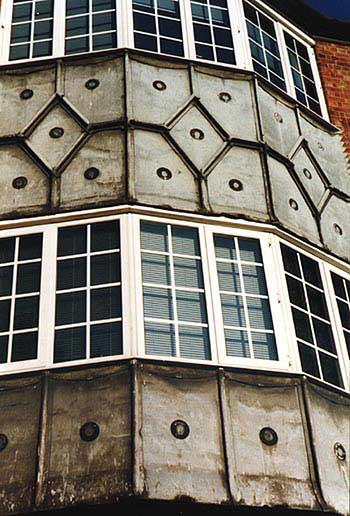

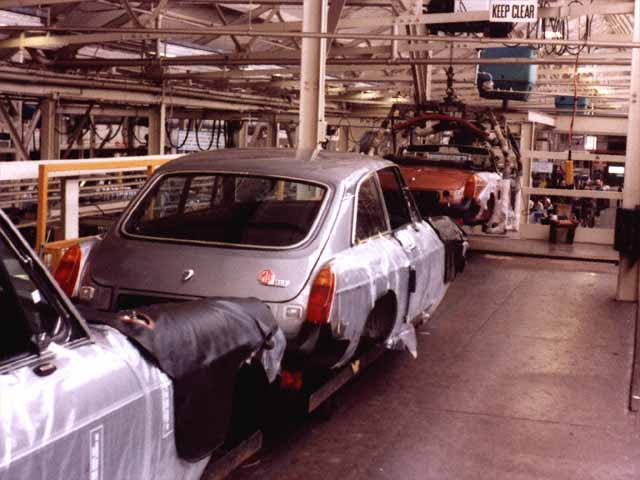
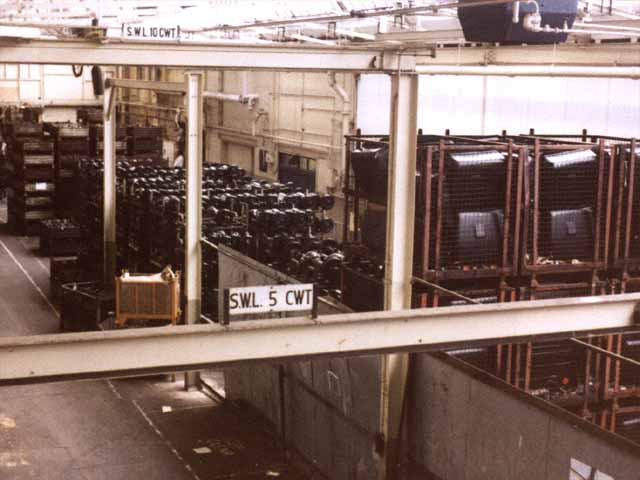

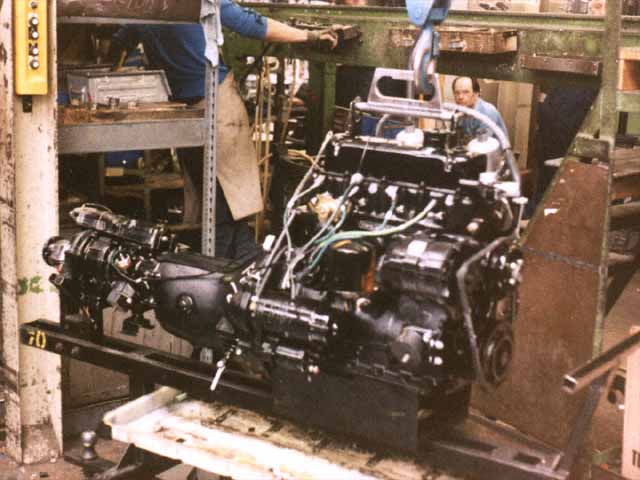

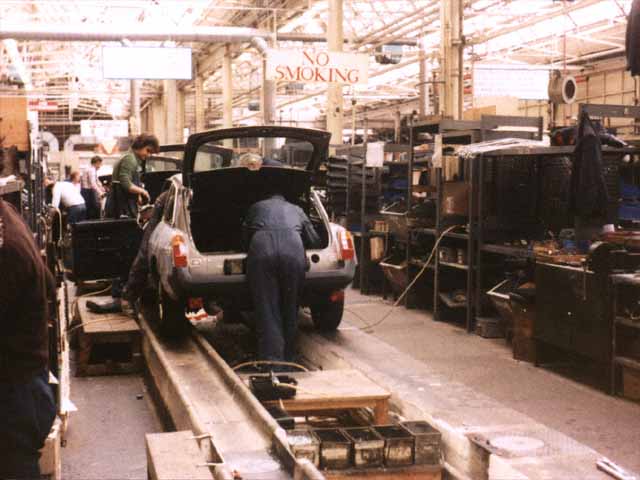
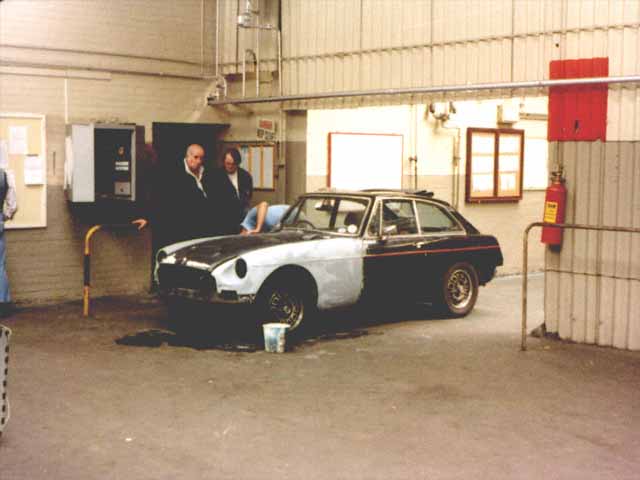

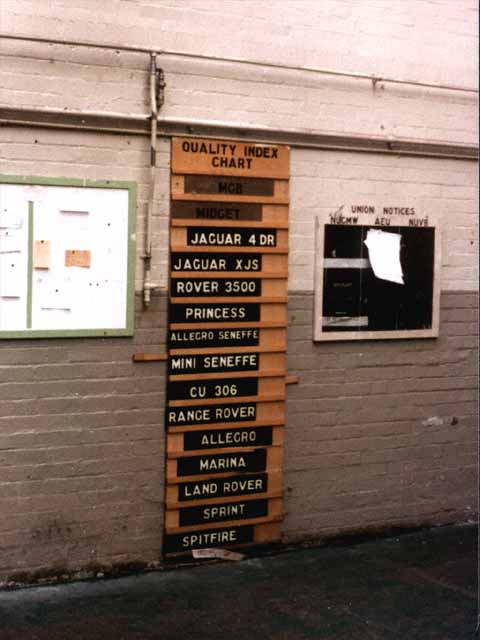




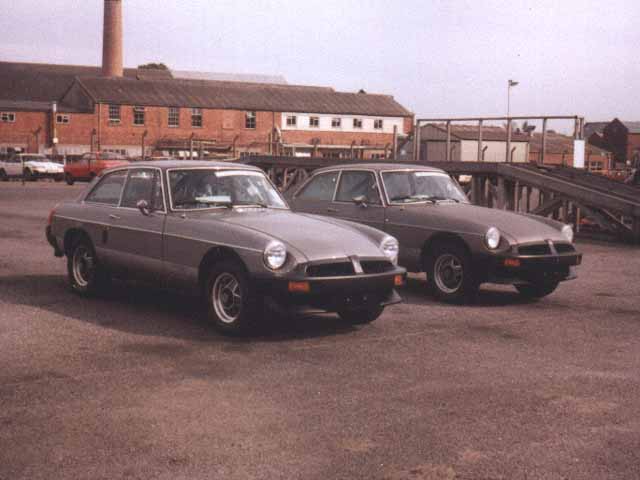

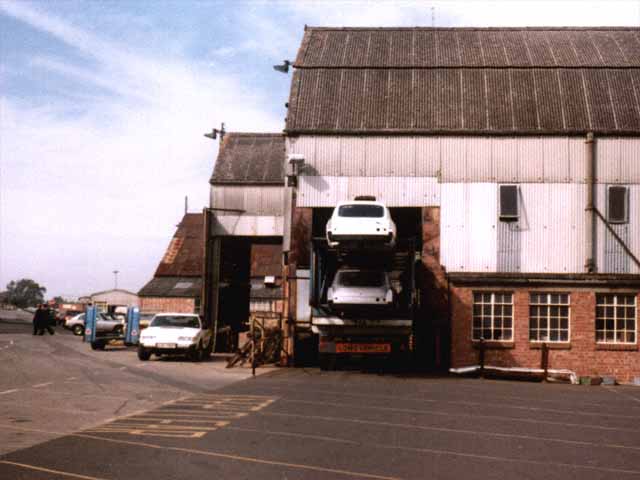



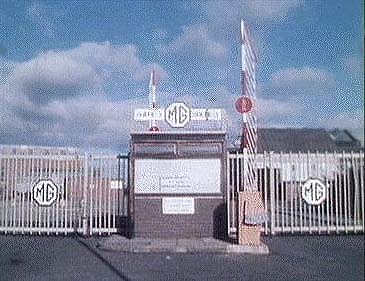



M G T ADVERTISING 1
MG T ADVERTISING 2
MG A ADVERTISING 3
MG A ADVERTISING 4
MG B ADVERTISING 5
MG B ADVERTISING 6
MG B ADVERTISING 7
MG C ADVERTISING 8
MG MIDGET ADVERTISING 9
MG MIDGET ADVERTISING 10
MG MIDGET ADVERTISING 11
MG RACE CIRCUIT
ON THE ROAD WITH D& J OUR 1970 MIDGET
ON THE ROAD WITH D& J'S 1976 MGB